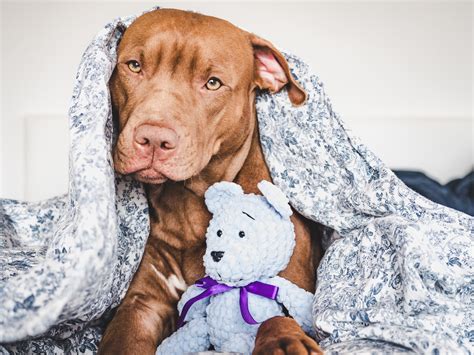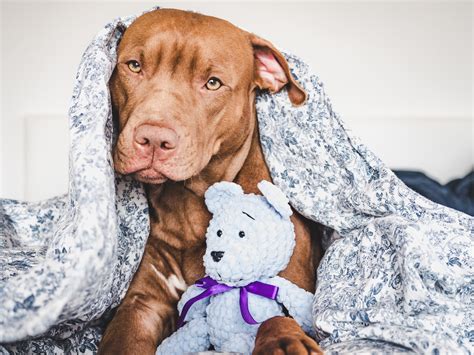
Dogs, often hailed as humankind’s best friend, harbor a surprising range of peculiar fears, from everyday household items to seemingly innocuous noises, as revealed in a viral TikTok video that has captured the attention of dog lovers worldwide. The video, posted by a dog owner under the username @jessiandremusic, showcases a list of her dog’s “silly” fears, offering a humorous yet insightful look into the canine psyche.
The viral TikTok video, which has garnered significant attention, details a list of seemingly irrational fears experienced by the dog, including things like coat hangers, certain sounds, and even specific types of clothing. The owner’s lighthearted approach to her dog’s anxieties has resonated with many viewers, prompting widespread discussion and shared experiences among dog owners. These fears, while appearing humorous on the surface, can significantly impact a dog’s well-being and behavior, highlighting the importance of understanding and addressing canine anxieties.
The video begins with a humorous introduction, displaying the text “My dog’s silly fears,” immediately captivating viewers with the promise of a lighthearted yet relatable exploration of canine anxieties. The subsequent list, presented with playful captions and accompanying visuals, details a variety of objects and situations that trigger fear in the dog. The owner’s narration adds a personal touch, creating an engaging and entertaining experience for viewers while emphasizing the seriousness of the underlying issue.
One of the most surprising fears revealed in the video is the dog’s aversion to coat hangers. The video depicts the dog exhibiting signs of distress and avoidance whenever a coat hanger is present, underscoring the unusual nature of this specific fear. While the exact reason for this phobia remains unclear, experts suggest it could be related to past experiences or negative associations with the object. The sound produced by coat hangers, especially when they are rattled or dropped, might also contribute to the dog’s anxiety.
Another notable fear highlighted in the video is the dog’s reaction to certain sounds, particularly those that are high-pitched or sudden. These auditory sensitivities can stem from a dog’s heightened sense of hearing, making them more susceptible to noises that humans might not even notice. The video showcases the dog’s response to these sounds, illustrating the palpable distress and discomfort they cause.
Specific types of clothing also make the list, indicating a potential connection between the dog’s fear and the visual or tactile stimuli associated with these garments. The video implies that certain textures, colors, or shapes of clothing might trigger anxiety in the dog, leading to avoidance behaviors. The owner humorously speculates about the possible reasons for these clothing-related fears, inviting viewers to share their own theories and experiences.
The overwhelming response to the TikTok video underscores the prevalence of peculiar fears among dogs and the shared experiences of dog owners navigating these challenges. Many viewers have commented on the video, expressing their surprise and amusement at the dog’s anxieties, while also sharing stories of their own dogs’ unique phobias. This collective sharing of experiences fosters a sense of community and solidarity among dog owners, emphasizing the importance of empathy and understanding when dealing with canine anxieties.
Experts in animal behavior emphasize that addressing these “silly” fears requires patience, understanding, and positive reinforcement techniques. Desensitization and counter-conditioning are commonly recommended strategies for gradually exposing dogs to their fears in a controlled and supportive environment. These methods aim to create positive associations with the feared stimuli, ultimately reducing the dog’s anxiety and improving their overall well-being.
The impact of fear on a dog’s behavior can manifest in various ways, including excessive barking, trembling, hiding, and even aggressive responses. Recognizing these signs of fear is crucial for dog owners to effectively address their pets’ anxieties and provide appropriate support. The video serves as a reminder that even seemingly harmless objects or situations can trigger significant distress in dogs, highlighting the need for heightened awareness and proactive intervention.
The viral TikTok video has not only provided entertainment but has also sparked a valuable conversation about canine anxieties and the importance of responsible pet ownership. By sharing her dog’s “silly” fears, the owner has encouraged others to reflect on their own pets’ unique phobias and to seek appropriate guidance and support when needed. This increased awareness can lead to improved quality of life for dogs and stronger, more empathetic relationships between pets and their owners. The video also provides valuable insights for potential dog owners, highlighting the complexities of canine behavior and the need for thorough research and preparation before bringing a dog into their homes. Understanding the potential fears and anxieties that dogs may experience is essential for creating a safe, supportive, and enriching environment for these beloved companions.
In-Depth Analysis
The article highlights several critical points regarding canine behavior and the emotional well-being of dogs. It touches upon the fact that dogs, like humans, can develop specific and sometimes irrational fears, which can significantly impact their lives. These fears are not always obvious and can be triggered by everyday objects or situations that humans often take for granted.
The importance of the article lies in its ability to raise awareness among dog owners about the potential anxieties their pets might be experiencing. Often, these fears are dismissed as mere quirks or “silliness,” but they can be indicative of deeper emotional distress. By recognizing and addressing these fears, owners can improve their dogs’ quality of life and strengthen their bond.
The article also implicitly underscores the responsibility that comes with pet ownership. Owning a dog is not just about providing food and shelter; it also involves understanding and addressing their emotional needs. This includes being attentive to signs of fear and anxiety, seeking professional guidance when necessary, and creating a safe and supportive environment.
Background Information
Canine psychology is a complex field that explores the cognitive and emotional processes of dogs. Understanding canine psychology is essential for addressing behavioral issues, including fears and phobias.
Dogs’ fears can stem from various sources, including genetics, past experiences, and environmental factors. Some breeds are predisposed to certain anxieties, while others may develop fears as a result of traumatic events or lack of socialization.
The environment in which a dog is raised also plays a crucial role in shaping its fears and anxieties. Dogs who are exposed to a wide range of stimuli during their early development are less likely to develop phobias later in life. Conversely, dogs who are raised in isolated or stressful environments are more susceptible to anxieties.
Expanded Context
The TikTok video and the subsequent news coverage reflect a growing trend in pet ownership, where owners are becoming more attuned to their pets’ emotional needs. This trend is driven by increased awareness of animal welfare issues and a greater emphasis on the human-animal bond.
As pet ownership becomes more prevalent, there is a greater need for resources and information on canine behavior and psychology. Veterinarians, animal behaviorists, and trainers play a crucial role in providing guidance and support to dog owners navigating these challenges.
The rise of social media platforms like TikTok has also contributed to increased awareness of canine anxieties. These platforms provide a space for dog owners to share their experiences, exchange advice, and connect with experts. This collective knowledge-sharing can empower owners to become more informed and proactive in addressing their pets’ needs.
The Role of Desensitization and Counter-Conditioning
Desensitization involves gradually exposing a dog to the feared stimulus in a controlled and safe environment. The exposure should be gradual and at a level that does not trigger a strong fear response. Over time, the dog becomes accustomed to the stimulus and its anxiety diminishes.
Counter-conditioning involves pairing the feared stimulus with something positive, such as treats or praise. This helps to create a positive association with the stimulus, replacing the negative emotions with positive ones.
Both desensitization and counter-conditioning require patience and consistency. It is important to work with a qualified animal behaviorist or trainer to develop a customized plan that is tailored to the individual dog’s needs.
The Importance of Early Socialization
Early socialization is crucial for preventing the development of fears and anxieties in dogs. During the critical socialization period (typically between 3 and 16 weeks of age), puppies should be exposed to a wide range of people, places, sounds, and objects.
This exposure helps puppies to develop confidence and adaptability, making them less likely to become fearful of new experiences later in life. Early socialization should be conducted in a safe and positive manner, ensuring that puppies have positive experiences with each new stimulus.
The Long-Term Impact of Untreated Fears
Untreated fears can have a significant impact on a dog’s overall well-being. Chronic anxiety can lead to stress-related health problems, such as digestive issues, skin problems, and weakened immune system.
Fearful dogs may also exhibit behavioral problems, such as aggression, excessive barking, and destructive behavior. These problems can strain the relationship between the dog and its owner and may even lead to the dog being surrendered to a shelter.
The Economic Considerations of Addressing Canine Fears
Addressing canine fears can involve significant financial investment. Veterinary consultations, behavioral therapy sessions, and specialized training programs can all be costly.
However, the long-term benefits of addressing these issues outweigh the financial costs. By improving a dog’s emotional well-being and preventing behavioral problems, owners can avoid costly veterinary bills and potential legal liabilities associated with aggression.
The Ethical Considerations of Owning Fearful Dogs
Owning a fearful dog comes with ethical responsibilities. Owners have a duty to provide their pets with a safe and supportive environment and to address their emotional needs.
Ignoring a dog’s fears is not only detrimental to its well-being but also a violation of the ethical principles of responsible pet ownership. Owners who are unable to provide adequate support for their fearful dogs may need to consider rehoming them to a more suitable environment.
Conclusion
The viral TikTok video serves as a reminder that dogs are complex emotional beings who can experience a wide range of fears and anxieties. Recognizing and addressing these fears is essential for promoting canine well-being and strengthening the human-animal bond. By embracing empathy, understanding, and evidence-based interventions, dog owners can help their pets to live happier, healthier, and more fulfilling lives.
Frequently Asked Questions (FAQ)
1. What are some common signs of fear in dogs?
Dogs exhibit fear in various ways, including cowering, trembling, panting, excessive barking, hiding, lip licking, yawning (when not tired), pinned ears, tucked tail, whale eye (showing the whites of their eyes), and attempts to escape or avoid the perceived threat. Some dogs may also exhibit aggressive behaviors like growling or snapping when they feel cornered or threatened. Recognizing these signs early is crucial for preventing escalation of fear and providing appropriate support.
2. What can I do if my dog is afraid of something specific?
If your dog has a specific fear, the most effective approach is often a combination of desensitization and counter-conditioning. Desensitization involves gradually exposing your dog to the feared stimulus at a low intensity, ensuring they remain calm and do not exhibit signs of fear. Counter-conditioning involves pairing the feared stimulus with positive reinforcement, such as treats or praise, to create a positive association. Consult with a certified professional dog trainer or veterinary behaviorist for personalized guidance. It’s also important never to force your dog to confront their fear directly, as this can worsen their anxiety.
3. Is it possible to completely eliminate a dog’s fear?
While it may not always be possible to completely eliminate a dog’s fear, it is often possible to significantly reduce their anxiety and improve their coping mechanisms. The goal is to help the dog learn to tolerate and manage their fear response, rather than eliminating the fear entirely. The success of treatment depends on various factors, including the severity of the fear, the dog’s temperament, and the consistency and effectiveness of the training methods used. In some cases, medication prescribed by a veterinarian may be necessary to manage anxiety levels.
4. Can ignoring my dog’s fear make it go away?
Ignoring a dog’s fear is generally not an effective strategy and can potentially worsen the problem. Ignoring the fear can lead to the dog feeling unsupported and more anxious, potentially causing the fear to escalate over time. Instead of ignoring, acknowledge the fear and provide reassurance and support. Using positive reinforcement techniques and creating a safe and predictable environment can help your dog feel more secure and confident.
5. When should I seek professional help for my dog’s fears?
You should seek professional help from a certified professional dog trainer or a veterinary behaviorist if your dog’s fears are severe, persistent, or significantly impacting their quality of life. Signs that professional help is needed include intense panic reactions, aggression related to fear, self-harming behaviors, and a general decline in well-being. A professional can help identify the underlying causes of the fear, develop a customized treatment plan, and provide guidance on implementing effective strategies for managing your dog’s anxiety. Early intervention is often more effective than waiting until the fear becomes deeply ingrained.









